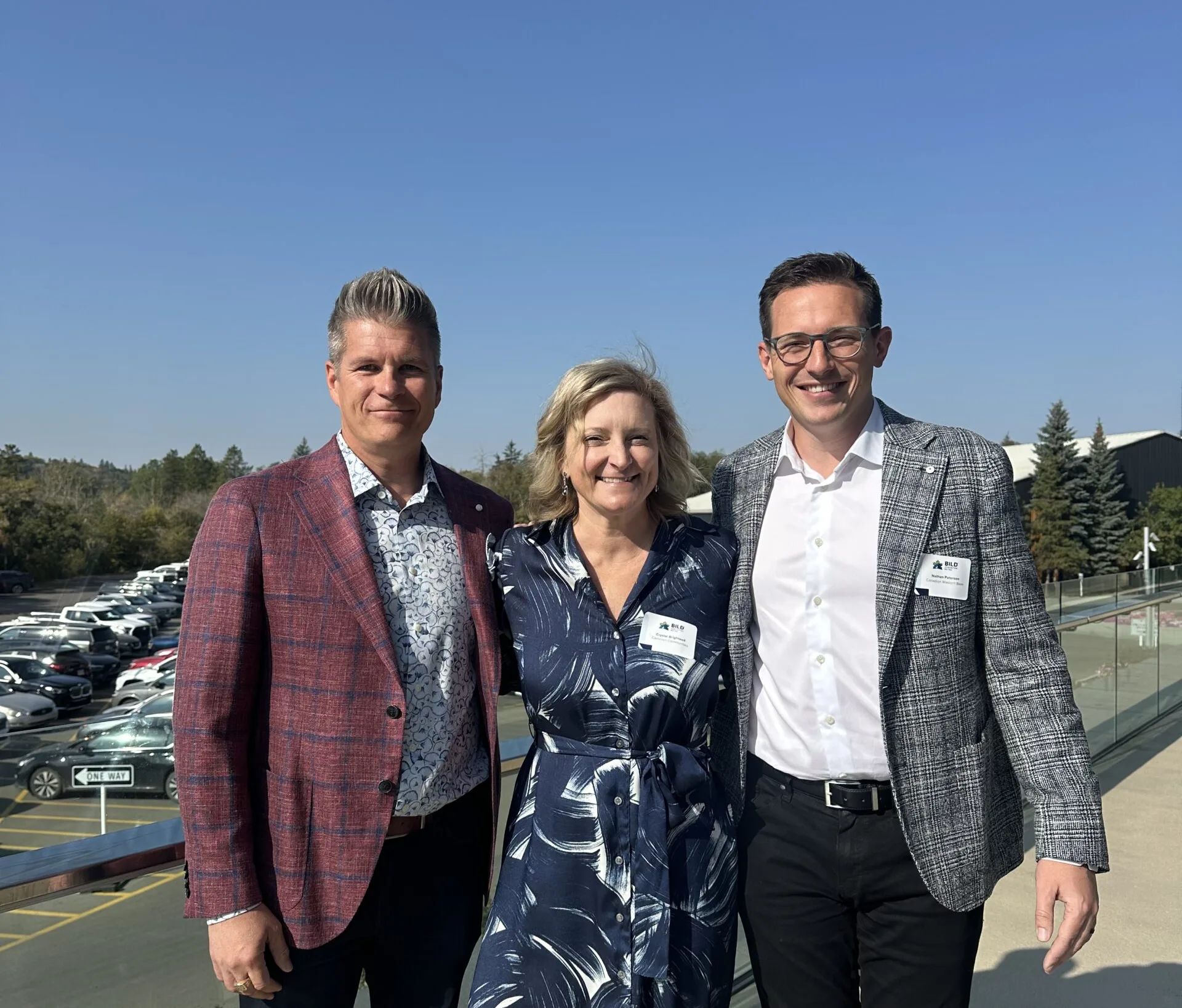Growth has, and always will be the talk of the town. And that was even more true at BILD Edmonton Metro’s September luncheon that took place just last week.
Moderated by Lindsey Butterfield, BILD Edmonton Metro’s Vice President of Government Relations & Policy, speakers Mark Solikowski, General Manager at Select Engineering Consultants, Crystal Brightwell, General Manager of Communities at Cameron Developments, and Nathan Petersen, Assistant Vice President of Real Estate Lending at CWB, gathered at our September luncheon to share their perspectives and expertise on the topic of growth
The presentation zoomed into new communities like Windermere and Heritage Valley, framing growth as a strategic and beneficial investment. Central to the conversation was BILD Edmonton Metro’s Urban Growth Case Study.
Understanding Urban Growth Case Study
The Urban Growth Case Study is a report that underscores how urban growth in Edmonton is not only necessary to accommodate new arrivals but is also a powerful economic driver for the city.
One of the study’s main findings showed that the development industry will contribute more than $3.2 billion in contributed assets to some Windermere and Heritage Valley at full build-out, funding critical infrastructure like roads, stormwater systems, and drainage. At full build-out, these areas are projected to generate $309 million in annual property tax revenue – making a significant net contribution to the city’s bottom line.
The purpose of the study is to reframe growth from a liability to an opportunity, whether it’s by leveraging growth while maintaining affordability, inclusivity, or quality of life.
“This study shows that we can build affordable communities where people don’t have to choose between housing and quality of life,” said Brightwell. “It means residents have real housing options — and enough disposable income to fully participate in the community and enjoy life beyond just paying the rent.”
When it comes to the long-term advantages of urban growth, Petersen reminded us that “we have to remember that how we grow matters. It’s both the people who are willing to step up and invest up front, as well as the city and what they will contribute. New Canadians have the ability to learn and grow within their community here, and there’s a lot of value for new residents who enter these areas to help them learn how to become a first-time homeowner.”
Getting Comfortable with Change
“Since 2000, Edmonton has been the fastest growing city in Canada. And it’s not stopping anytime soon,” said Butterfield. In the next decade alone, Windermere is expected to be home to 74,000 residents. “This is something that will happen, whether we agree with growth or not,” said Solikowski. “So, we have to figure out how to be comfortable with change, together.”
New communities also have opportunities that old ones don’t have, such as a space for cultural connection and social growth to occur. “The report shows a suburbanization of new Canadians, and they are choosing to live in these areas for community, religious purposes, and more,” said Brightwell.
This mindset starts with shifting growth as a obstacle to understanding it as an opportunity, shared Brightwell. “New communities foster cultural connection, social growth, and homeownership for first-time buyers,” she said. “We have to start looking at residents as the drivers of growth, and viewing expansion as a good thing — a way to enhance building and development innovation, create new jobs, and make infrastructure improvements.”
Petersen added that thinking in a scarcity mindset is the wrong way to look at it. “It’s an opportunity for new growth, investment, and tax revenue.”
Building for People, Not Templates
Balancing growth with sustainable planning, environmental/social concerns, and resident quality of life. Urban growth is not just about numbers — it’s about people, culture, and opportunity.
“It isn’t a copy and paste process,” said Brightwell. “We’re now developing communities around the areas and types of people who are moving in there, and considering what they might need or want access to. We’re building for real life.”
New communities are big conversations, and the main theme is the people who live there. Urban life doesn’t just exist in Downtown,” she added. “You can still get amenities in the suburbs.”
Creating Future Communities
Each community is in its own little box, with commercial support, walkability, and residential opportunities.
“You can think about it like choosing a flavour; not everybody wants vanilla ice cream,” said Solikowski. “Sturgeon County is different than St. Albert, Alces, or Windemere. It’s just a matter of finding what the vibe is, and once you’ve found what you like, that’s the key. There’s a lot of housing options here, and we’ve got something for everybody.”
Now, collaboration is needed more than ever between developers, government, and citizens. Edmonton has the chance to lead with innovative and inclusive growth strategies, and we’re already on the right track.
“The only thing that’s consistent in our industry is change. Things are going to change,” said Solikowski. “So, what’s the next trend going to be? Growth in the region — and we must be ready to accommodate that. We’re already halfway there.”
Thank you to the luncheon Presenting Sponsor, Pals Geomatics, Host Bar Sponsor, S3 Precast, Lunch Sponsor, Hi Signs, Support Sponsor, Whissell Contracting, and Creative Sponsor, MLZ Creative.

Written by Payton Phillips
